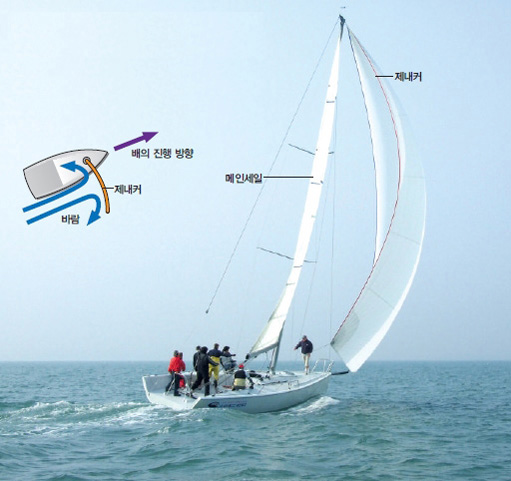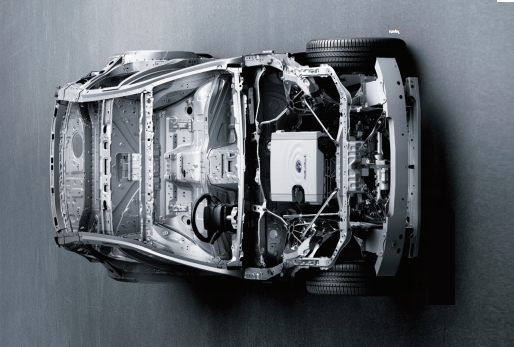
우리는 다시 우주왕복선을 띄울수 있게 되었지만 그러나 이제 여기서 어디로 가야 할 것인가?
우주탐험의 미래는 계획성있게 짜는게 중요하다. 왜냐하면 그것은 비용이 많이 들고 또 우리는 머뭇거릴 여유도 없기 때문이다. 우리가 꿈꾸고 있는 하나의 명백한 목표는 화성과 그 위성들에 유인비행을 하는 것이다. 이것이 달성된다면 우리는 지구로부터 너무 멀지도 않고 지구와 어느정도 비슷한 새로운 하나의 세계를 탐험하게 될 것이다. 화성은 지구보다 작고 추운곳이지만 엷은 대기를 갖고 있으며 또 하루가 24시간이고 극지에는 얼음도 덮혀있는 곳이다. 화성은 미스터리도 간직하고 있다. 즉 지금은 말라버렸지만 한때 물이 흘렀을 하상(河床)도, 용암을 뿜어냈을 화산도, 왕성한 지각운동의 흔적으로 볼 수 있는 거대한 협곡도 화성에는 남아있는 것이다.
허나 사람을 화성에 보냈다가 살아서 귀환시키는 것은 거창한 작업이며 미국이나 소련이 등이 휘어질 정도의 노력과 우주인의 안전에 대한 상상할 수 없는, 가슴조이는 두려움없이는 수행해 낼 수 없는 그런 아슬아슬한 가능성의 영역에 속하는 일이다. 만약에 미국과 소련이 자원과 기술을 합쳐 화성탐사계획을 국가차원아닌 국제적차원으로 만들면 약간은 덜 위험한 사업이 될 것이다. 그렇게 되면 다른 분야에서도 국제협력분위기를 조성시킬 수 있다. 그리고 우리가 지상에서 당면한 문제들은 본질적으로 전지구적인 성격의 것이고 전지구적인 해결책을 요하는 것이기 때문에 그런 국제협력은 화성탐사보다는 좋은 결과를 가져올수도 있는 것이다.
그럼에도 여전히 지구를 기지로 한 화성여행(탐험)은 쉽사리 되풀이 될 수 없는 전시행위가 될 수밖에 없다. 마치 15년전 달여행이 장관이기는 했지만 보다 넓고 깊은 어떤 수확을 얻는데는 기여하지 못한 것처럼. 우주탐험을 위해 보다 약한 중력, 대기간섭을 안받는 외계기지를 건설하는 것은 절대로 필요하다.
기지건설은 당연히 우주정거장의 건설부터 시작된다. 소련에서 건설한것보다 크고 용도가 다양한 정거장, 교대근무하는 승무원들이 상주할 수 있는 정거장을 말하는 것이다. 부품들은 우주정거장에 옮겨질 것이다. 부품들을 조립해 우주비행선을 만들수 있다. 비행선은 강력한 로킷없이는 지상에서 띄어질 수 없다. 그러나 부품들은 훨씬 싸고 안전하게 가져올 수 있다. 한번 만들어진 비행선은 보다 멀리 떨어진 지구에서보다는 약한 중력에서 출발하며 또 우주정거장의 궤도속도의 반응을 받아 시동되어 연료를 적게 소모하면서 보다 큰 하물을 운반할 수 있다.
우주정거장을 기지로하면 달에 가서 그곳에 영구기지를 건설하는 일이 훨씬 쉬워진다. 달은 거대한 광산으로 쓰여진다. 달표면에 있는 적당한 물질덩어리들은 전자기력을 사용해 추진되는 '질량동력기'에 의해 우주로 발사되는데 달에서는 이 일이 상대적으로 쉽다. 그곳의 중력은 지구의 6분의1밖에 안되기 때문이다. 우주에서는 달에서 온 물질을 가공해 콘크리트, 유리 그리고 흙같은 여러가지 자재를 만들수 있다.
우주의 구조물들은 달에 있는 물질로 만들수 있게 되는 것이다. 태양에너지를 이용하고 그것을 지구에까지 보내는 발전소라든가 우주공간의 특수성을 이용하고 산업의 장막과 지구자체로부터의 공해에서 해방된 자동화한 공장이라든지 한곳에 1천여명이 살 수 있고 우리에게 익숙한 지구환경을 모방한 여러개의 거주지들이 달의 물질들로 만들어질 수 있는 것이다.
지구와 달사이에 우주기지를 건설하고 이용하는데 오는 21세기의 대부분이 소요될지 모른다. 그러나 일단 건설하면 우주탐험을 위한 확고한 기지가 마련되는 것이며 그 기지는 지구자체보다도 훨씬 유용할 것이다.
우주 거주지사람들은 지구인들이 경험할 수 없는 우주환경에 익숙해질 것이다. 그들은 자기네의 작은 세계에서 움직일때 중력의 변화가 있는 것에 익숙해질 것이며 사용하고난 공기라든가 물 그리고 음식들이 순환 재사용될 수밖에 없다는 필요성을 당연한 것으로 여길것이다.
우주선에 가는것은 이제까지 익숙해 있던 공간보다 작은 세계로 가는것에 불과하며 환경적 특성은 마찬가지일 것이다. 지구인에 아주 생소하게 느껴질것도 그곳사람들에게는 편안하게 느껴질것이다.
그래서 이 우주선의 거주자들은 우주선생활에 심리적으로 잘 적응해있어 우주로의 먼 항해에 보다 적합한 자격을 갖추게 된다. 미래의 페니키아인, 바이킹, 그리고 폴리네시아인은 그들인 것이다. 그들은 22세기에 선조들이 넘었던 물의 대양(大洋)보다 훨씬 광막한 우주의 대양을 헤쳐 나갈것이다.
이 기지겸 거주지로부터 화성이나 그 위성에 빈번한 항해가 이루어질 것이다. 그러나 그것은 단지 시초일뿐 소행성이라든가 목성의 위성들 그리고 종국에는 태양계 전체로의 탐험여행도 이루어질 것이다. 그런 다음 23세기의 목표―태양계 밖의 별들이 있는 것이다.
Now that we are back on track with the shuttle, where do we go from here? It's important to have our future in space planned, for the road is an expensive one and we cannot afford to flouder.
One obvious dream goal is that of a manned flight to Mars and its satellites. If we accomplish this, we will explore a world that is not too far away and that in some ways is like the Earth. It is smaller and colder, but it has thin atmosphere, a 24-hour day and ice-caps. And it has mysteries, too- dried-up river-beds that once may have flowed with water, volcanoes that once may have spewed lava, a vast canyon that may betoken a once-active crust.
Yet the task of sending human beings to Mars and bringing them back alive is so enormous and so barely within the realm of possibility that neither the United States nor the Soviet Union can undertake it without back-breaking efforts and unimaginably suspenseful fears for the safety of the astronauts. It becomes marginally less dangerous if the United States and the Soviet Union pool their resources and expertise, making the Mars Project a global effort rather than a national one. That might encourage globalism in other directions, too; and since the problems we now face on Earth are global in nature and require global solutions, that might be an even happier result of this difficult project than the exploration of Mars would be.
Still, a trip to Mars from Earth-as-base is bound to be a showpiece not easily repeated. It would be like the trips to the moon 15 years ago, which, however spectacular, seemed to lead to nothing broader and deeper.
It is absolutely necessary that we build a base other than Earth for our ventures into space-a base with a lesser gravity and one without an interfering atmosphere.
The logical beginning is with a space station, one larger and more versatile than the Soviets have set up in space, one that would be continuously inhabited by crews working in shifts. To the space station, the parts could be brought, out of which new space vessels can be built. The intact vessels could not be lifted off Earth without vast rocketry, but the parts could ve brought up much more cheaply and safely. The vessels, once built, taking off under weaker gravitational pull than they would from the more distant Earth, and with the initial kick of the space station's orbital velocity, would need less fuel and would carry larger payloads.
With space-station-as-base, it would be far easier to reach the moon and set up a permanent base there. The moon could then serve as a huge mine. Suitable chunks of the moon's surface can be fired into space by means of "mass-drivers" that use elec-tromagnetic forces for propulsion. This would be relatively easy on the moon, where the surface gravity is only one-sixth that of Earth. In space, the lunar ore could be smelted and from it all structural metals could be obtained, as well as concrete, glass and soil.
It is with moon materials that we will be able to build structures in spacepower sta-tions that make use of solar energy and relay it to Earth; automated factories that would take advantage of the special properties of space, and help lift the pall of industry and pollution from Earth itself; settlements that may each be large enough to house 1,000 human beings in orbit about Earth under conditions that closely mimic the environment we are used to.
It may take us the better part of the 21st Century to build up, and put into use, the space between Earth and moon, but once that is done, we will have, at last, a firm base for operations in space beyond; one that is far superior to Earth itself.
The inhabitants of the settlements will be accustomed to space as Earth people can never be. They will be accustomed to changes in apparent gravitational pull as they move about their small worlds. They will take for granted the necessity to recycle tightly all the air, water and food they use.
When a settler steps into a spaceship, he will be moving into a spaceship, he will be moving into a world that is smaller than the one he is used to, but its properties will remain familiar. What would be impossibly foreign to an Earth person would be home-sweet-home to a settler.
The settlers, then, being much better suited, psychologically, to life on a spaceship, will be better equipped to face long voyages through space. It is they who will be the Phonicians, the Vikings, the polynesians of the future, making their way into the 22nd Century through a space-ocean far vaster than the water-ocean traversed by their predecessors.
It is from the settlements-as-base that repeated voyages to Mars and its satellites can be made. That will be only the start too, for other trips can be made to the asteroids, to the satellites of Jupiter and eventually to all the solar system. And beyond that are the goals of the 23rd Century-the nearer stars.
(c) 1988, Los Angeles Time Syndicate

















